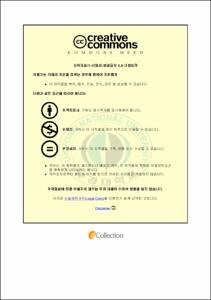김 추출물에 의한 RAW264.7 대식세포의 항염증 효과
- Abstract
- Many researchers have studied algae as a source of materials with potential biological activities because many marine algae extracts have strong antioxidant properties.
Seaweed which has nutritionally low calories is rich in protein, carbohydrates, dietary fiber, vitamins, and minerals.
In addition, it is known to be high in unsaturated fatty acids and essential amino acids compared to vegetables. Porphyra yezoensis out of seaweed such as green laver, porphyra yezoensis, Undaria pinnatifida, and hijiki is the oldest and highest in intake frequency in daily life. In Particular, it has not only much vitamin B, omega-3 fatty acids, and taurine lowering blood cholesterol, but much more protein and vitamin A. Porphyra yezoensis extract used in this experiment has anti-oxidation effect and reduces the incidence of colon cancer.
Also, it is famous for other anti-cancer, and sleep extension effects, also increasing the weight of the number of cells and immune-related organs.
This study was investigated the anti-inflammatory effects of Porphyra yezoensis extract (PYE) on RAW 264.7 macrophages by measuring nitric oxide (NO), reactive oxygen species (ROS), superoxide dismutase (SOD), catalase activity, inducible NOS (iNOS), cyclooxygenase-2 (COX-2), nuclear factor-kappa B (NF-κB), interleukin-1β (1L-1β) and tumor necrosis factor-alpha (TNF-α). PYE decreased the production of intracellular ROS dose dependently and increased SOD and catalase activity in lipopolysaccharide (LPS)-stimulated RAW 264.7 cells. PYE significantly suppressed the production of NO and reduced the expression of iNOS, COX-2 and NF-κB. In addition PYE treatment significantly inhibited the production of IL-1β and TNF-α and significantly reduced the phosphorylation of Akt and MAPK in LPS-stimulated RAW 264.7 cells. These results show that PYE has potential antioxidant and anti-inflammatory actions.
- Issued Date
- 2015
- Awarded Date
- 2015. 2
- Type
- Dissertation
- Publisher
- 부경대학교
- Affiliation
- 부경대학교
- Department
- 교육대학원 영양교육전공
- Advisor
- 남택정
- Table Of Contents
- Ⅰ. 서론
Ⅱ. 재료 및 방법
1. 재료
1) 시약 및 재료
2. 실험방법
1) 시료의 조제
2) 세포의 배양
3) MTS assay
4) Cytokines 발현 측정
5) Western blot analysis
① Total cell lysate 추출
② 단백질 발현 및 분석
6) NO assay
7) ROS assay
8) 항산화 효소 SOD 활성 측정
9) 항산화 효소 Catalase 활성 측정
10) 통계학적 처리
Ⅲ. 결과 및 고찰
1. 김 추출물(PYE)의 제조
2. RAW 264.7 대식세포에 대한 김 추출물의 독성 측정
3. 김 추출물의 항산화 효과
1) RAW 264.7 대식세포의 ROS 생성에 미치는 영향
2) RAW 264.7 대식세포의 SOD 활성 변화
3) RAW 264.7 대식세포의 Catalase의 활성 변화
4. 김 추출물의 항산화 작용 기전
1) RAW 264.7 대식세포의 NO 생성에 미치는 영향
2) 염증 인자 발현에 미치는 영향
3) NF-κB signaling pathway에 미치는 영향
4) MAPK signaling pathway에 미치는 영향
Ⅳ. 결론 및 요약
Ⅴ. 참고 문헌
- Degree
- Master
- Files in This Item:
-
-
Download
 김 추출물에 의한 RAW264.7 대식세포의 항염증 효과.pdf
기타 데이터 / 798.34 kB / Adobe PDF
김 추출물에 의한 RAW264.7 대식세포의 항염증 효과.pdf
기타 데이터 / 798.34 kB / Adobe PDF
-
Items in Repository are protected by copyright, with all rights reserved, unless otherwise indicated.